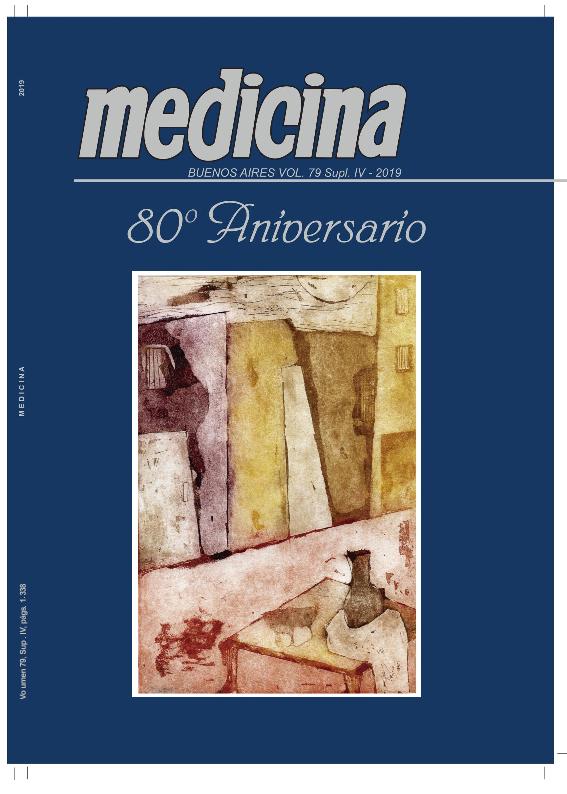Evento
Essential oils as sources of potential anthelmintic compounds tested on the model organism Caenorhabditis elegans
Colaboradores:
Kotsias, Basilio Aristides ; de Vito, Eduardo
; de Vito, Eduardo ; Narvaiz Kantor, Isabel; Semeniuk, Guillermo Basilio
; Narvaiz Kantor, Isabel; Semeniuk, Guillermo Basilio
 ; de Vito, Eduardo
; de Vito, Eduardo ; Narvaiz Kantor, Isabel; Semeniuk, Guillermo Basilio
; Narvaiz Kantor, Isabel; Semeniuk, Guillermo Basilio
Tipo del evento:
Reunión
Nombre del evento:
LXIV Reunión Anual de la Sociedad Argentina de Investigación Clínica (SAIC); LI Reunión Anual de la Asociación Argentina de Farmacología Experimental (SAFE); XXI Reunión Anual de la Sociedad Argentina de Biología (SAB); XXXI Reunión Anual de la Sociedad Argentina de Protozoología (SAP); IX Reunión Anual de la Asociación Argentina de Nanomedicinas (NANOMED-ar); VI Reunión Científica Regional de la Asociación Argentina de Ciencia y Tecnología de Animales de Laboratorio (AACyTAL)
Fecha del evento:
13/11/2019
Institución Organizadora:
Sociedad Argentina de Investigación Clínica;
Asociación Argentina de Farmacología Experimental;
Sociedad Argentina de Biología;
Sociedad Argentina de Protozoología;
Asociación Argentina de Nanomedicinas;
Asociación Argentina de Ciencia y Tecnología de Animales de Laboratorio;
The Histochemical Society;
Título de la revista:
Medicina (Buenos Aires)
Editorial:
Fundacion Revista Medicina
ISSN:
0025-7680
e-ISSN:
1669-9106
Idioma:
Inglés
Clasificación temática:
Resumen
Parasitic nematodes are of major significance as human pathogens and have important economic impact worldwide due to considerable losses in livestock and food crops. Drug treatment of nematode infections are the pillar of worm control in human and veterinary medicine. Due to the appearance of drug resistant nematodes, there is a need of developing novel drugs. As parasitic nematodes are not ideal laboratory animals, the non-parasitic nematode Caenorhabditis elegans, has emerged as a model organism for drug discovery. Essential oils (EOs) are natural products produced by aromatic plants. EOs are complex mixtures that usually contain two or three major phytochemicals, which can be terpenes and/or aromatic compounds. We used paralysis assays of wild-type and mutant C. elegans strain and electrophysiological recordings to identify EO with potential anthelmintic activities, reveal the active components, the target sites and mechanisms of action. We found that EOs belonging to six different orders produced rapid paralysis of C. elegans and we establish the half maximal effective concentration values between 0.02-1.2 percent of EOs. We also found that all EOs inhibit egg hatching. Thus, EOs can mediate both rapid and long-term anthelmintic effects. We determined that trans-cinnamaldehyde (TC), a major component of C. verum EO, produces both paralysis and egg-hatching inhibition. By testing mutant worms, we identified that muscle L- AChR and GABA receptors are EO and TC targets in vivo. Electrophysiological studies from C. elegans cultured muscle cells identified the mechanism underlying the antiparasitic effect. Thus, by modulating two receptors with key roles in worm motility, these EO emerge as novel sources of anthelmintic compounds.
Palabras clave:
C.ELEGANS
,
CYS-LOOPS RECEPTORS
,
ANTHELMINTICS
Archivos asociados
Licencia
Identificadores
Colecciones
Eventos(INIBIBB)
Eventos de INST.DE INVEST.BIOQUIMICAS BAHIA BLANCA (I)
Eventos de INST.DE INVEST.BIOQUIMICAS BAHIA BLANCA (I)
Citación
Essential oils as sources of potential anthelmintic compounds tested on the model organism Caenorhabditis elegans; LXIV Reunión Anual de la Sociedad Argentina de Investigación Clínica (SAIC); LI Reunión Anual de la Asociación Argentina de Farmacología Experimental (SAFE); XXI Reunión Anual de la Sociedad Argentina de Biología (SAB); XXXI Reunión Anual de la Sociedad Argentina de Protozoología (SAP); IX Reunión Anual de la Asociación Argentina de Nanomedicinas (NANOMED-ar); VI Reunión Científica Regional de la Asociación Argentina de Ciencia y Tecnología de Animales de Laboratorio (AACyTAL); Mar del Plata; Argentina; 2019; 209-209
Compartir



